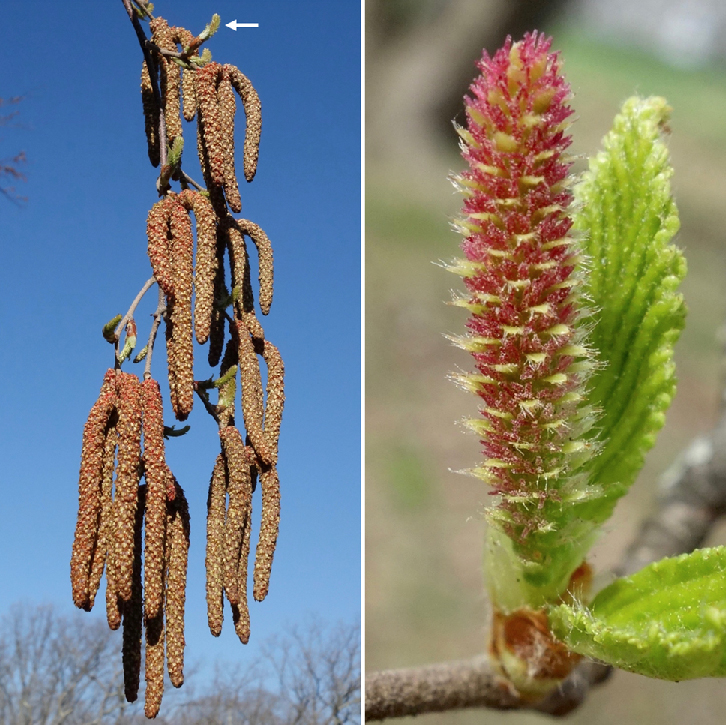It would be hard to miss the thousands and thousands of pollen-bearing catkins dangling from every birch tree in the Arnold Arboretum (or perhaps your yard or woods) now. But, have you ever wondered where these pollen grains are heading? Far less apparent, but wonderful to see, once you know what to look for, are the female (future seed-bearing) catkins of birches.
Birches are wind pollinated, so the overwhelming majority of pollen grains are going to end up on the ground or stuck to random surfaces such as leaves, bark, and you. But, a few lucky pollen grains will swirl through the air and land on the stigmas of the small female flowers, thus setting off a developmental odyssey that culminates in the creation of very large numbers of minute winged fruits that will, themselves, be scattered to the winds in July and August (stay tuned later this summer).
Pictured left, are a dangling set of male catkins of the Asian species Betula schmidtii (Schmidt birch; 7486*B; this wonderful tree, an 1896 accession) about to shed pollen. A white arrow points to a less apparent structure, a female catkin. At right, a close-up of a female catkin with more than a hundred small reddish flowers (each subtended by a little green bract). The red protuberances are the stigmas, where pollen must alight to begin the reproductive dance.

If you crave more pictures of the Arnold Arboretum, I started an Instagram account where I will post one image from the Arboretum every day until things seem a bit more normal.
From “free” to “friend”…
Established in 1911 as the Bulletin of Popular Information, Arnoldia has long been a definitive forum for conversations about temperate woody plants and their landscapes. In 2022, we rolled out a new vision for the magazine as a vigorous forum for tales of plant exploration, behind-the-scenes glimpses of botanical research, and deep dives into the history of gardens, landscapes, and science. The new Arnoldia includes poetry, visual art, and literary essays, following the human imagination wherever it entangles with trees.
It takes resources to gather and nurture these new voices, and we depend on the support of our member-subscribers to make it possible. But membership means more: by becoming a member of the Arnold Arboretum, you help to keep our collection vibrant and our research and educational mission active. Through the pages of Arnoldia, you can take part in the life of this free-to-all landscape whether you live next door or an ocean away.
